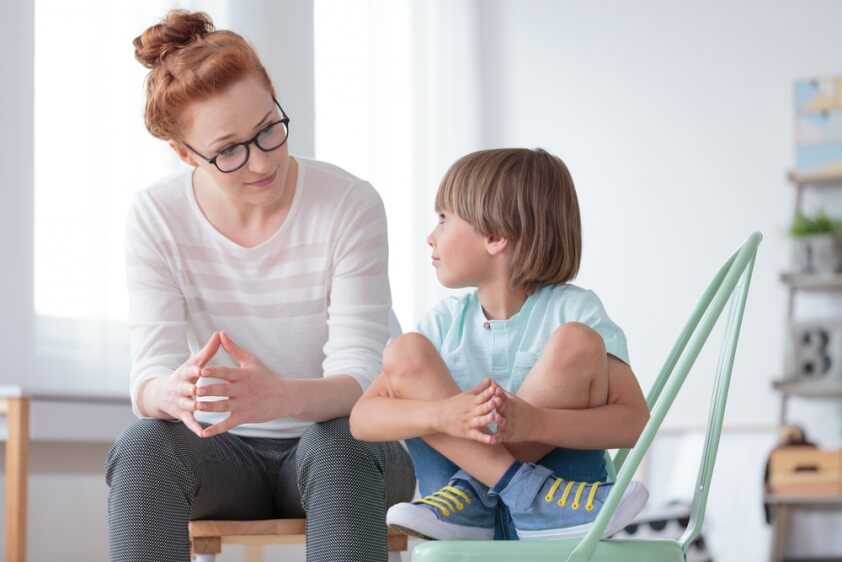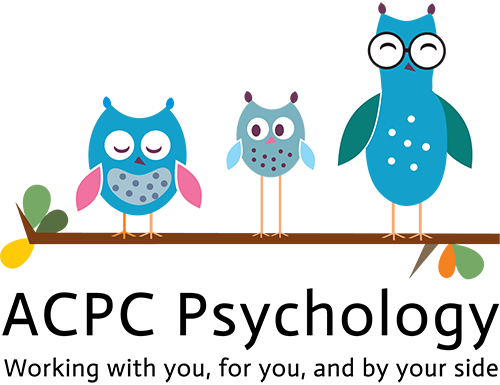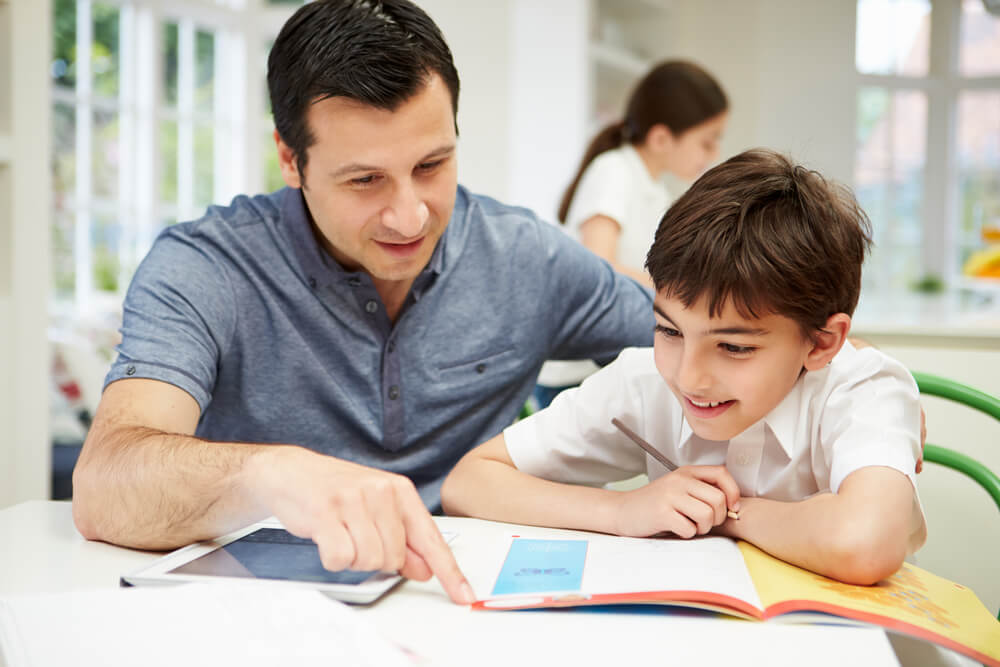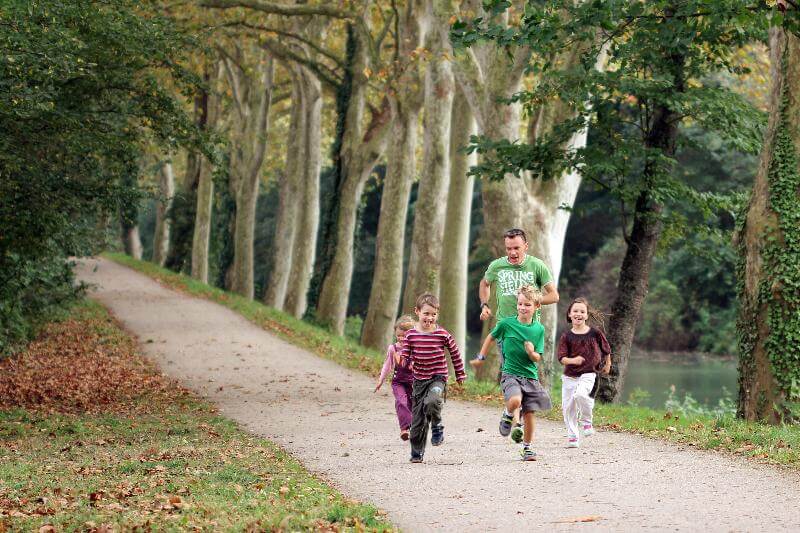Self-Regulation, Connection, and the Principles of Peaceful Parenting

One of the most common stories that we are told by parents on our initial meeting is that their child has meltdowns “over nothing”, that the family is “walking on eggshells” around their child and that they go “from zero to 100 at the drop of a hat”. Indeed, this is a very common presentation for young children and teenagers alike.
Many parents ask for us to work with the child on developing better emotion regulation skills or on improving their behaviour. However, you can get much more bang for your buck by examining your own role in the escalation and meltdown and experimenting with different responses to your child’s escalation.
Peaceful parenting is an approach well-described in Dr. Laura Markham’s Peaceful Parents, Happy Kids: How to Stop Yelling and Start Connecting, and can provide a powerful foundation upon which to build up your relationship with your child and to help your child to regulate themselves better.
TO REGULATE A CHILD, YOU FIRST MUST REGULATE YOURSELF
Children’s brains are not fully developed yet, which means that kids are easily overwhelmed by big emotions. Strong emotional reactions often lead to children losing control of their behaviour, resulting in physical aggression, defiance and non-compliance, and extreme emotional reactions. It is very common for parents to meet that escalation with their own escalation – many parents describe situations where they have tried to discipline, punish, or tell a child off in the midst of a meltdown, only to find that their child escalates further.
Parents often recognise that yelling is a response that extends the problem but find that they are at the end of their tether and felt that they could not help but lose it or needed to intervene due to the child doing something harmful.
Keeping calm when your child is losing control is a very difficult thing to do, but is also essential in helping a child regulate and in modelling how to keep calm. Regulating your own emotions involves noticing the emotions and the associated sensations in your body when they occur, taking responsibility to calm yourself, so that you can respond to your child with love instead of anger, and monitoring your own mood to provide effective self-care. As the grown-up, it is your responsibility to keep calmer than your child, which will lead to far shorter meltdowns and less destructive behaviour.
To self-regulate, press the Pause Button and Stop, Drop, and Breathe– when you notice that you are becoming angry, upset, or anxious with your child, STOP what you’re doing, DROP your agenda and what you want to accomplish, and BREATHE to calm down. CHOOSE to let go of the anger, find a thought or an image that helps you open up, and calm down the sensations in your body with pressure or movement.
UNDERSTANDING FEELINGS AND EMOTIONS
Many of the children we see do not have great understanding or control over their own emotions, but this can be equally true of adults. An individual’s emotional learning depends a lot on their upbringing. Some parents, having experienced environments which told them that they should not feel scared, angry, or sad when they were growing up, unknowingly pass those same messages on to their children.
Emotions are messages that tell us something about our environment:
- Fear tells us that there is a threat that we need to avoid
- Sadness tells us that we have lost or are disappointed about something
- Anger tells us that we are under threat and need to defend ourselves.
Anger is also often a secondary response to underlying emotions, an expression of something underneath – a fear or guilt or sadness that anger covers up for and helps us avoid having to deal with it. When we notice and acknowledge our feelings, we can choose what we do about them – our feelings do not control our behaviour. However, if we are frightened of our feelings and want to get rid of them, we can tend to react in unhelpful ways, such as lashing out, numbing them, or ignoring them altogether, which can lead to a cycle of anger, guilt, and shame. However, we are not our emotions; we can feel something without acting on it.
When our uncomfortable or difficult emotions are triggered, our brain tells our body to respond to this threat – it tells us to fight and lash out in anger, to run away (flight) to avoid the threat, or to freeze and withdraw or go numb. When we act while in flight or flight, we tend to do or say things that we would not otherwise do and may end up regretting later – this is true of our kids and of us!
To model to our children how to behave more appropriately when they are angry, we must be able to behave more calmly when we are in fight or flight ourselves. Anger is often a defence against deeper fears, anxieties, or sadness, and dealing with those underlying emotions can dissipate the anger more quickly. Healing these emotions involvesnoticing the sensations in your body, but not acting on them.
EXPERIMENT WITH A DIFFERENT APPROACH
Much of our behaviour is driven by automatic reactions to triggered emotions. Changing these cycles and patterns of behaviour involves resisting the automatic reactions that our brain unconsciously takes us down.
FIRST, you need to notice the tangle of emotions that occur in response to the child’s behaviour and acknowledge that these emotions are pushing you towards an automatic response.
NEXT, we need to resist that automatic reaction, and redirect the impulse towards something more productive, such as the Pause button response above or just taking a break and breathing.
The first time you try to do this, it may not be successful – these patterns in behaviour and in your brain are strong and well-worn. But each time you manage to resist the impulse and not react automatically, you are building new pathways in your brain that will make it easier and easier to do the more and more you practice.
The more you are able to respond with calm rather than anger, the more automatic that response becomes. The more you hit pause and then choose to calm down, the easier this will become, and the more you demonstrate to your child that it is possible.
It can be helpful to remember that the vast majority of the time, parenting is NOT AN EMERGENCY– and does not need to be responded to with our body’s emergency response system of fight or flight.
CONNECT
Traditional parenting wisdom recommends rewards and consequences to try to control your child’s behaviour to help them behave more appropriately – we reward we want to see more of and shut down what we want to see less of. These strategies can absolutely have a place in parenting, but when that is all we are relying on, we are not helping children develop internal controls on their behaviour or to be motivated for the sake of doing well rather than by external rewards.
Instead, peaceful parenting advocates for the centrality of CONNECTION in having influence over a child’s behaviour and emotions – the bond that you build between yourself and your child is essential in having them want to listen to you and do the right thing. For every negative interaction you have with your child, you need five positive interactions in order to keep their emotional bank account from going into the negative.
At first, just putting aside time to spend talking, playing, and connectingin a fun, delightful, and loving way will be important to start to strengthen the bond. Setting aside time each day to spend with that child one-on-one to engage in unstructured, child-led play is very valuable – this special time allows children to connect with you closely and strengthens the bond between parent and child.
The stronger a connection you have with your child, the more influence you will have. The time must be uninterrupted, turning off your phone and putting aside other demands in order to spend 10 minutes a day focusing solely on your child. During this time, let you child choose what to play, and do not try to teach or guide or ask questions; just join your child in their own world and let them lead the way.
Then, in the moment, the fundamental strategy to improve a child’s emotional control and behaviour is to CONNECT with them and offer them love and empathy no matter how poorly they have behaved. Recognising that behaviour is communication and is being driven by difficult emotions, it is your role in this moment to provide understanding and help your child feel heard before you turn to discipline or solutions.
Until they feel heard, the child will not be able to calm down enough to be able to participate in any conversations – as long as they’re in fight/flight no learning will occur. Once everyone is calm, you can discuss what they and others can do differently next time to avoid reaching that point.
There is so much more to the Peaceful Parenting approach that would benefit many families – come and speak with us if these concepts ring true with you, and you would find professional support helpful in implementing them.
For additional resources, please consult Dr. Laura Markham’s books and workbooks Peaceful Parent, Happy Kids and her website Aha Parenting(https://www.ahaparenting.com/).
Written by: Stephanie Morse, Registered Psychologist (clinical psychology registrar) at ACPC



